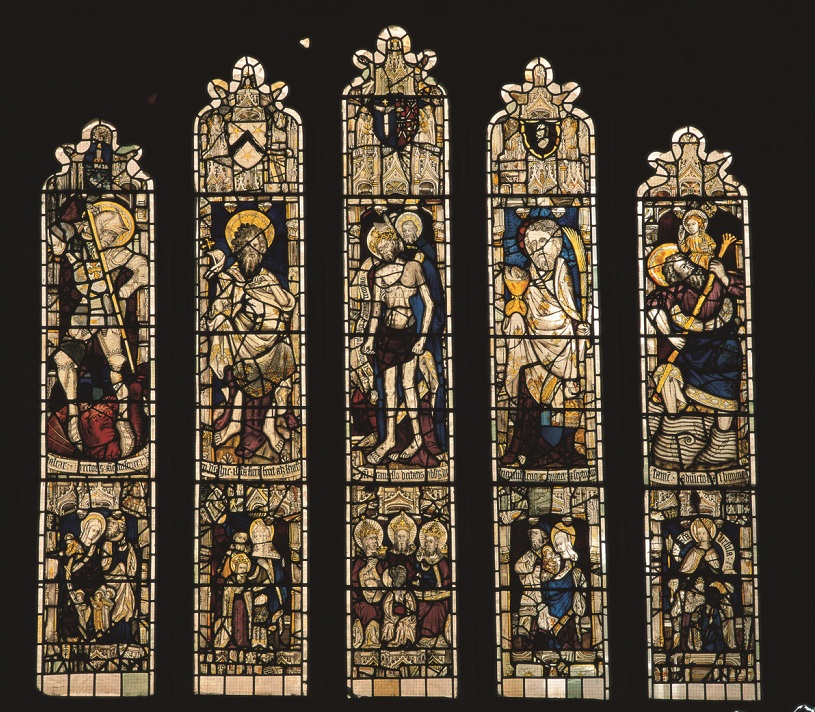Exploring medieval York through stained glass
Rob Andrews, volunteer at York Holy Trinity and graduate of University of York’s Postgraduate Diploma in Parish Church Studies, explores what historic church artefacts can tell us about the social history of York…
York through the Middle Ages
The ancient city of York boasts an extraordinary built heritage; under steeple and tower, echoes and memories of the old city remain despite its ever-changing urban geography.
Today, we have a fair understanding of York’s architectural transformation since the Middle Ages. In the early 15th century there stood as many as forty parish churches in the city, and by the reformation the general consensus was that it was ‘over-churched’. Skip ahead in time to the turn of the 18th century and York’s skyline would only have had about half the number of steeples and towers. Most would have been present in the headcount of the late-medieval period, with a smaller number being 17th century rebuilds. Each was an architectural beacon, different in style and shape, rising to pierce the horizon under the shadow of the great cathedral. Today, the number has been whittled down further.
But what was life like in York across this stretch of time? Throughout the later medieval period (c.1250-1500), York enjoyed a steady wave of economic expansion. Industry was the tune and people were singing along. Merchants and traders, both foreign and local, conducted business around the numerous markets of the city. By the turn of the 16th century a malt market near the church of St. Martin’s on Coney Street became so popular that on Tuesdays, Thursdays and Saturdays it overflowed in to the churchyard.
Along with the company of mercers and merchants, craft guilds began to regulate trade and economy across the city. Religious guilds, which could secure lay people a funeral and the assurance of masses said for their souls, also held sway in the 15th century cityscape. As their membership rose they began to make a lasting impact on the fabric of the medieval city.
The story of the city in stained glass
One square church tower erected in 1495, close to the boundary of York Minster, belongs to Holy Trinity Church on Goodramgate (now in our care). Through study of a particular sectionof extraordinary glass gifted to the church in 1471, we can explore the social history of the medieval city. From left to right across the five central lights of Holy Trinity’s east window we see St. George, St. John the Baptist, a Trinitarian image of Corpus Christi, St. John the Evangelist and St. Christopher. But why were these particular figures selected?

This cast of five figures was chosen, commissioned and paid for by the then-recently appointed parish rector, Reverend John Walker. His membership with the combined Guild of St. Christopher and St. George, as well as with the prestigious Corpus Christi Guild, is the likely reason for their incorporation in the window. As two of the more influential religious guilds in the medieval city, the images of St. George and St. Christopher will have been embraced and understood by many. Through the evidence of bequests in Revd Walker’s will we know that he gifted the east window to Holy Trinity Goodramgate around the date when the two separate guilds merged in the 1460s - a decade in which the combined Guild grew in wealth and influence.
The central Corpus Christi light is also more than it might at first appear: the image of Revd Walker himself features at the knee of Christ uttering the dedicatory words ‘I adore and glorify you, O Holy Trinity’. This is a statement relating to his part in the annual celebration of the Corpus Christi - a highlight in medieval York’s liturgical year, which served to bring together the people of each parish through the immensely popular procession of mystery plays. This procession and lengthy celebration resulted in a network of inter-parish relations where images of this kind were shared.
Mapping the city’s social structure in art
Revd Walker’s east window is an artwork which maps out the social order of a medieval city, demonstrating how devotion and economy were once intimately linked. We are presented with images of popular saints serving as friends and inspiration to medieval men and women, whilst also acting as representatives of business and charity. The next time you stand in front of a stained-glass window or an elaborate monument, take a moment to consider its part in articulating the relationship between the medieval church and surrounding community. You may discover more than you think.
- Learn more about Holy Trinity York or plan your visit at www.visitchurches.org.uk/york

